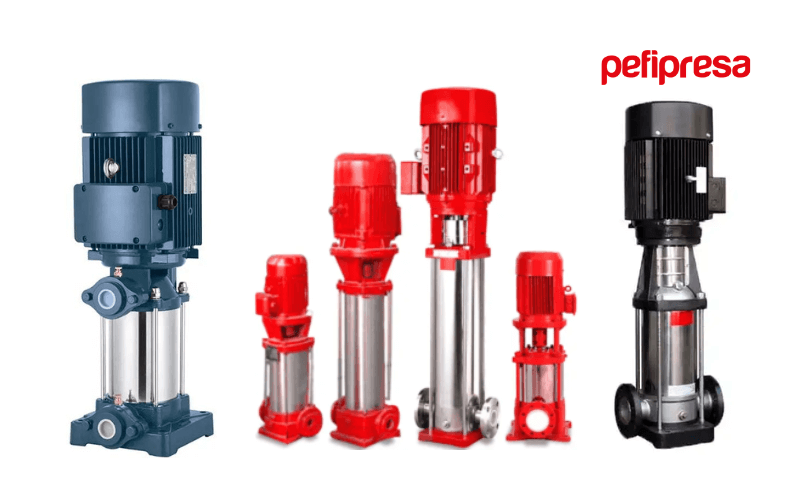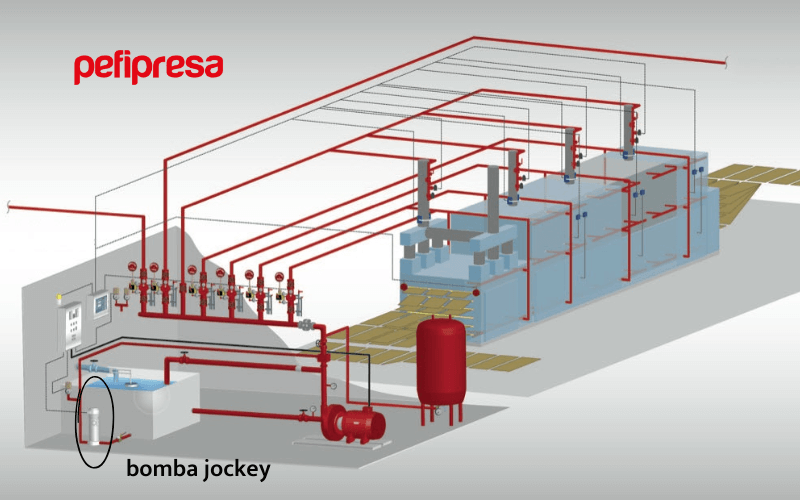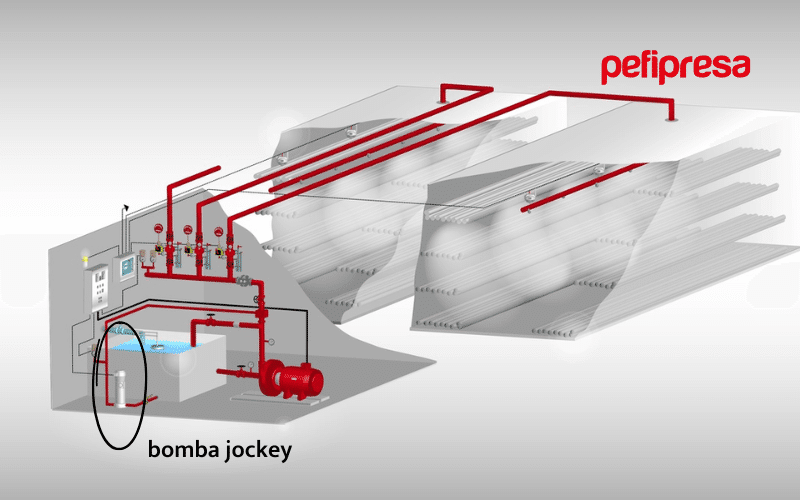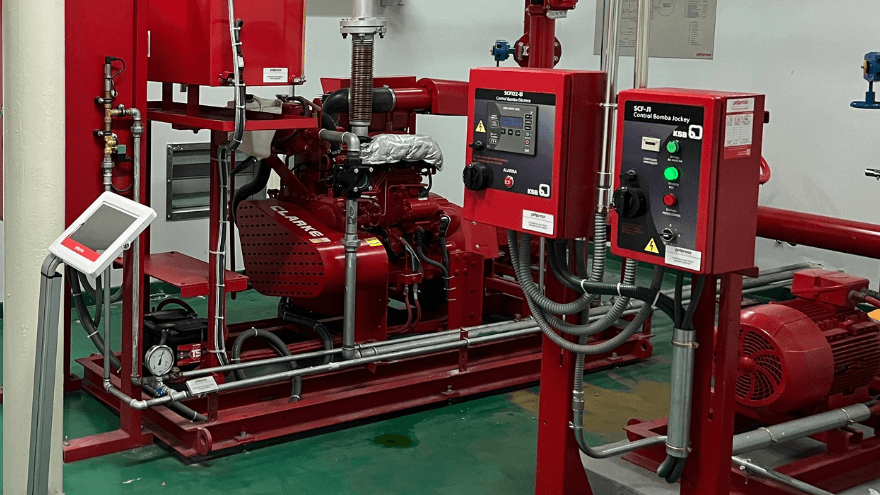Surely you have heard of the jockey pump from a Fire Protection group, but you still do not know what exactly the jockey pump is, how it works within the system or what it is for. Let’s explain this and why this little pump is so important to the overall functioning of the Fire Protection system.
What is the jockey pump?
This type of pump should not be sized for other uses: cleaning vehicles, watering gardens, washing sidewalks, etc. It should not even be sized to supply any extinguishing system, EIB, sprinkler, etc.The term “jockey” refers to the ability of this type of pump to move water quickly through tight spaces.

What is a jockey pump for?
Once started, its mission is to repair the small leaks that have occurred in the general fire network and then stop.
It is recommended to size it in a range of flow rates between 2 and 6 m3/h so that, once started, it works for a few seconds and has to receive the stop order immediately.
It is designed to absorb small losses during operation. Hence its importance, since other fire pumps are not designed to carry out this task and the regulations require that the stops be carried out manually, that is, they will continue to work until they are stopped by an operator or emergency personnel.
What does a pressure maintenance system consist of?
A pressure maintenance system will consist of a pump driven by an electric motor, jockey pump, control panel and in the latest edition of standard 23,500:2021 the hydropneumatic accumulator has been included, whose mission is keep the water distribution network for FP systems full and pressurized.
Why is so important to keep the network pressurized?
It is important that the fire network is pressurized for these reasons:
- To have pressurized water in the different systems that make up the FP installation (hydrant network, BIEs, sprinklers, etc.) in case of emergency.
- Through the pressure switches or pressure sensors, detect a possible drop in pressure in the network to order the pumps to start in an emergency.
As we have mentioned before, the smaller the flow of the jockey pump, and the smaller the volume of the accumulator, the better the system’s pressure maintenance system will work, achieving that the number of constant starts and stops is minimized to a minimum, since according to the UNE 23.500:2021 standard, the stop of the jockey pump must be delayed between 10 and 20 seconds from the moment the pressure sensor (pressure switch) gives the stop order.
For the reasons mentioned above, the UNE 23,500:2021 standard has limited the volume of hydropneumatic accumulators to a maximum of 85 litres.

How the jockey pump works
As we have already indicated, the jockey pump detects the pressure of the fire network and increases it when it detects that it is below a certain pressure level to make it rise.
In this way, the jockey pump starts automatically, and also stops automatically when the set pressure is reached.
A jockey pump is a pump with an electric motor which, like the main pumps, draws water from the water supply and supplies it to the fire protection network.
Starting is automatic like the main pumps, but a jockey pump can stop running automatically once the set pressure has been obtained from the start/stop pressure switches.
The jockey pump usually shares an electrical control panel with one of the main electric pumps where you can select the automatic or manual operating mode, check the number of starts of your pump, and important information about whether it is they produce numerous starts due to possible leaks in the installation.

Importance of the jockey pump in a Fire Extinguishing system
This is a essential pump both with the system at rest and after operation.
It will come into operation with less or more regularity depending on the level of loss of the installation, in the event that it starts continuously, the entire installation should be checked carefully in search of possible leaks.
When the system has jumped and a sprinkler network has been triggered, for example, the pumps with the largest flow and size will act and it is also normal for the jockey to act if the pressure has dropped.
If you have any technical questions in this regard, you can contact our engineers and experts and we will be happy to solve them for you.









